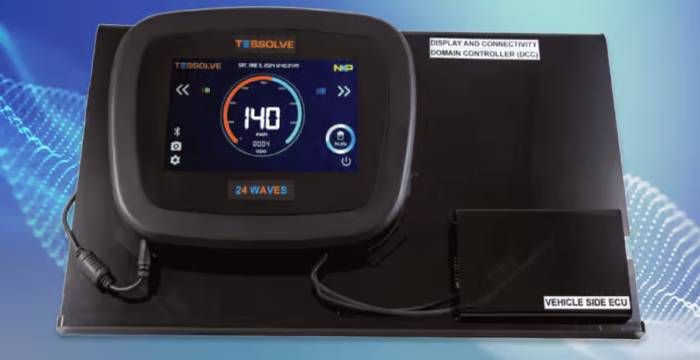Over the past few decades, the basic dashboard has experienced a dramatic change, progressing from basic analog gauges to advanced digital displays that function as the main interface between the driver and the vehicle. The way we interact with our cars, digest information while driving, and enjoy the ride itself is all radically altered by this technological advancement, which goes well beyond simple aesthetic updating. Digital instrument clusters have become essential elements of contemporary car design, impacting everything from user experience and brand identification to safety and personalization. This article explores eight key aspects of this embedded product design services that has quietly transformed the space behind the steering wheel.

Simple mechanical gauges, which used actual needles moving around numbered dials to show speed, fuel level, and engine temperature, were the forerunners of instrument clusters. Instead of using electronic representations to convey information, these analog instruments used direct mechanical or electrical links to vehicle systems. With the introduction of simple LED indications in the 1980s, partial LCD implementations in the 1990s, and finally today's completely digital, high-resolution screens, the shift to digital displays happened gradually. With each iteration providing enhancements in color reproduction, resolution, and usefulness, this progression follows the general trend of technological progress. With technologies formerly limited to PCs and cellphones, modern digital clusters reflect the fusion of consumer electronics and vehicle engineering.
With much higher information density without excessive cognitive strain, digital instrument clusters radically alter the driver information experience. Digital embedded system may display hundreds of information streams using context-sensitive displays that adjust to the driving situations at hand, whereas previous analog dashboards were restricted to a few set gauges. While performance driving automatically highlights engine data and G-force indications, a highway drive may place more emphasis on economy measurements and navigation direction. By emphasizing important warnings and discreetly delivering supplementary information, this contextual awareness also extends to information hierarchy. By employing color, motion, location, and transparency to generate user-friendly information layers that drivers can quickly absorb, the digital method makes it feasible to implement complex organizational concepts that were not achievable with physical gauges.
The unparalleled customisation capabilities of digital instrument clusters, which adjust to individual tastes and driving styles, are among their most important benefits. Drivers have a variety of display options to choose from, including traditional analog-style representations, data-rich technical presentations, and minimalist information layouts. Beyond only look, these customization choices also involve information prioritizing; some drivers like clear navigational instructions, while others place more emphasis on efficiency or performance measures. In order to provide a customized environment without requiring manual reconfiguration, advanced systems save these preferences in driver profiles that activate instantly upon entrance. Because of its versatility, traditional dashboards' universal, one-size-fits-all design becomes customized experiences that take into account each user's priorities, preferred visuals, and preferred methods of processing information.
Digital instrument clusters provide complicated system status and warnings in easily understood forms, making them essential visual interfaces for ever-more-advanced driver assistance systems. Digital displays show the recognition of cars ahead and the current following distance settings when adaptive cruise control modifies the vehicle's speed. While parking assistance elements offer integrated visual guidance that would not be achievable on conventional gauges, lane keeping systems employ the display to illustrate recognized lane boundaries and intervention status. This integration significantly lessens the cognitive effort required to combine data from disparate displays by creating a single awareness center where drivers may access both conventional vehicle information and advanced system status. Instead of using abstract warning lights, these assistive tools may communicate through rich visuals thanks to the digital approach.
By dynamically changing how they portray information depending on driving conditions, contemporary digital instrument clusters exhibit impressive contextual intelligence. These displays may show efficiency metrics and navigation assistance when driving normally, but they quickly alter when conditions change. For example, they may automatically enlarge vital warning indications when systems identify possible risks or highlight the state of traction control on slick roads. While performance driving scenarios can automatically highlight engine characteristics and lap time information, night driving causes brightness to be decreased and color schemes to be redshifted to preserve night vision. This situational awareness also extends to integration with external data sources; certain systems modify display components in response to impending road characteristics or weather conditions. The capacity of contextual flexibility to display precisely the correct information at the right time makes interfaces seem almost prophetic.
Through carefully crafted visual communication that lessens distraction and enhances information processing, digital instrument clusters play a major role in driving safety. Compared to mechanical gauges, the technology allows for bigger, more readable displays of important information. Urgent messages may be highlighted with attention-grabbing animation, color changes, and size alterations. In order to minimize unsafe look time away from the road, advanced implementations integrate the findings of attention research to provide important information right into the driver's primary field of view. Sophisticated use of contrast, font, and iconography that are especially tailored for rapid comprehension while driving is made possible by the digital media. Information presentation is transformed from a basic indicator to a message that is specifically tailored to the cognitive demands of driving thanks to this scientifically based visual design.
More than just a new technology advancement, digital instrument clusters completely change how drivers view and engage with automobiles. These technologies improve driving enjoyment, convenience, and safety by presenting contextual, tailored information in a way that is optimal for speedy comprehension. As automotive interfaces continue to advance toward further immersion and integration, the digital dashboard serves as a crucial link between the increasingly sophisticated capabilities of vehicles and human perception. Companies offering hardware design services play a vital role in enabling these smart systems through precise, high-performance component design and seamless integration of embedded technologies.
Be the first to post comment!